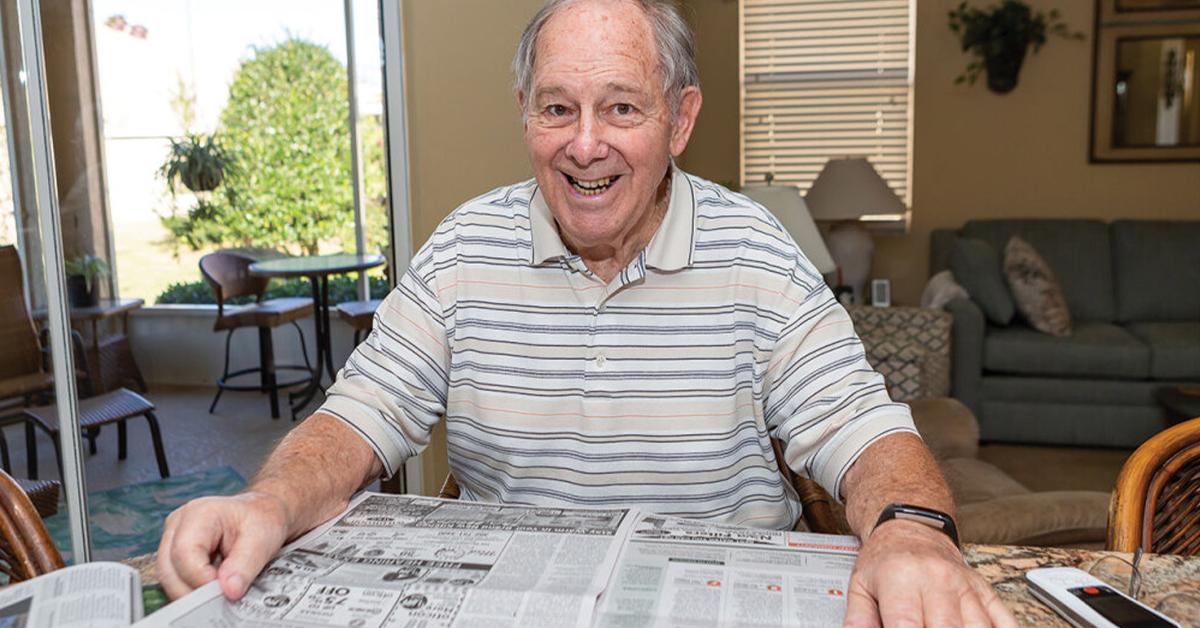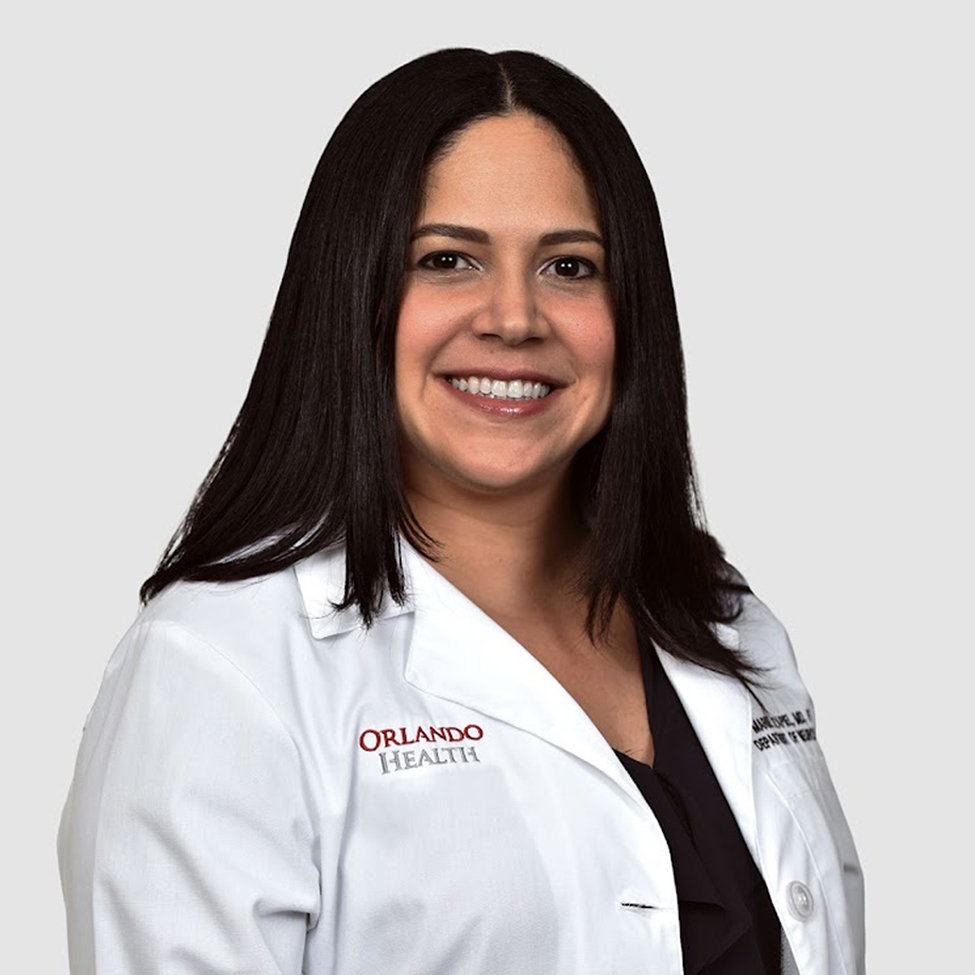Gasoline and groceries were the commodities Arthur Meyers hauled during a 43-year career as a truck driver that differed in one very important way from the careers of many of his colleagues.
“I was lucky because when I was hauling gasoline I worked 10-hour days, so I was home every night,” Arthur relates. “And when I hauled groceries I was never out for any more than one or two nights at a time.”
Arthur, 82, transported gasoline to service stations, industrial plants and factories in and around Akron, Ohio, for 20 years. He then moved to Florida, where he delivered groceries to military bases between Key West and Myrtle Beach, South Carolina, for 23 more.
Along the way, he fought an ever-increasing battle with essential tremor, a nervous system disorder that mostly causes involuntary twitching in the hands.
“I first noticed the problem in 1963,” Arthur relates. “At first, it didn’t really keep me from doing anything I normally would. I played golf, went deer hunting, things like that, and with golf especially, I wasn’t very good anyways, so it didn’t really affect my game much.
“Over the years, though, the issue got a lot worse. After I retired in 2000, it got really bad. My right hand was the worst, and I’m right-handed. It would shake all the time. I had trouble with anything that required a steady hand like eating or writing.”
In 2006, Arthur began taking medication for the problem, but it didn’t help. Then, in 2018, he saw an ad for a seminar about essential tremor led by another neurologist, Anette Nieves, MD.
“This seminar was held in The Villages®, where I live, so I decided to attend,” Arthur remembers. “When I heard her speak, I thought to myself, I’ve been seeing the wrong doctor for this. I decided right then and there to make a switch.”
That decision proved to be life-changing for Arthur because Dr. Nieves suggested addressing his essential tremor with an advanced treatment option called deep brain stimulation, or DBS.
Do You Live With Parkinson’s |
Regaining Control
With DBS, a small device delivers electrical impulses to electrodes surgically implanted in the brain. That device, known clinically as a neurostimulator, is implanted beneath the skin in the patient’s chest. The impulses are sent to specific areas of the brain through the electrodes, which are connected to the neurostimulator by wires that run beneath the skin.
Arthur’s neurostimulator was made by Boston Scientific, a company lauded by neurologists and neurosurgeons for its development of neuromodulation devices for patients with Parkinson’s disease and essential tremor. The FDA has approved DBS to treat those conditions.
“Boston Scientific’s innovations have been a game changer in the DBS market,” says Mariel Szapiel, MD, FAANS. “For example, their planning and programming software, Stimview, allows for patient stimulation settings to be optimized immediately.
“Other devices do not have this advanced technology. As a result, it can sometimes take months or even years to find the right settings and optimize a patient’s stimulation.
“Boston Scientific’s DBS system gives our patients the most stimulation options available which results in unmatched therapeutic benefit and symptom relief. Their DBS system provides our patients more personalized therapy.”
Studies show that within a year of being implanted with a Boston Scientific DBS device, Parkinson’s disease and essential tremor patients experience a 90 percent improvement in motor function and a 30 percent decrease in required medications for their conditions.
As with Arthur, candidacy for DBS is typically determined by a neurologist, who performs a series of tests to evaluate the patient’s likely response to the therapy. Once a patient is deemed a candidate, an MRI and CT scan of the brain is performed to determine where to place the leads, which are coated wires with electrodes at the tip.
Placement of the leads begins with sedation of the patient. The patient’s head is placed in a frame that ensures it remains steady throughout the procedure. Next, a small haircut is made over the incision area.
After a CT scan to determine exactly where the brain will be accessed, the surgeon makes a small incision in the scalp and uses a surgical drill to create an opening in the skull through which the leads will be placed.
Movement disorder patients such as Arthur are often awakened during the procedure and asked to perform small movements to confirm effective placement of the leads.
The number of leads depends on the disorder. Some patients require only one whereas others need one on each side of the head. The procedure is typically followed by an overnight hospital stay for observation.
At a later date, the neurostimulator is placed in a small pouch created under the skin below the collarbone. An insulated extension wire from the electrodes is run through the scalp, behind the ear and down the neck to the chest, where it’s connected beneath the skin to the neurostimulator.
After a neurologist programs the neurostimulator, the patient uses a handheld controller to turn the system on and off. Stimulation settings can be adjusted to changes in the patient’s condition.
“Life-Changing” Procedure
Arthur underwent the three-hour DBS procedure four years ago. He went home the next day “thrilled with the outcome” and “feeling like a new man.”
“The difference this has made in my life is amazing,” Arthur relates. “I used to struggle through things like eating dinner and holding onto things. Not anymore. Thanks to this procedure, I have the control over my hands that I need to do things normally.
“I’m a big fan of this procedure, because the only time I have any problems with my hands now is if I let the battery run low. And if that happens, all I have to do is plug it in and recharge it. It’s just like recharging your phone.”
Arthur visits Dr. Nieves every six months for a checkup to determine whether changes need to be made to the neurostimulator. Arthur says he’s such a fan of the treatment that he gladly recommends DBS and Dr. Nieves.
“I met a guy at the grocery story recently who has essential tremor,” Arthur offers. “I told him all about the DBS procedure and what it did for me. I even gave him Dr. Nieves name so that he can contact her. I would do that for anybody.”






